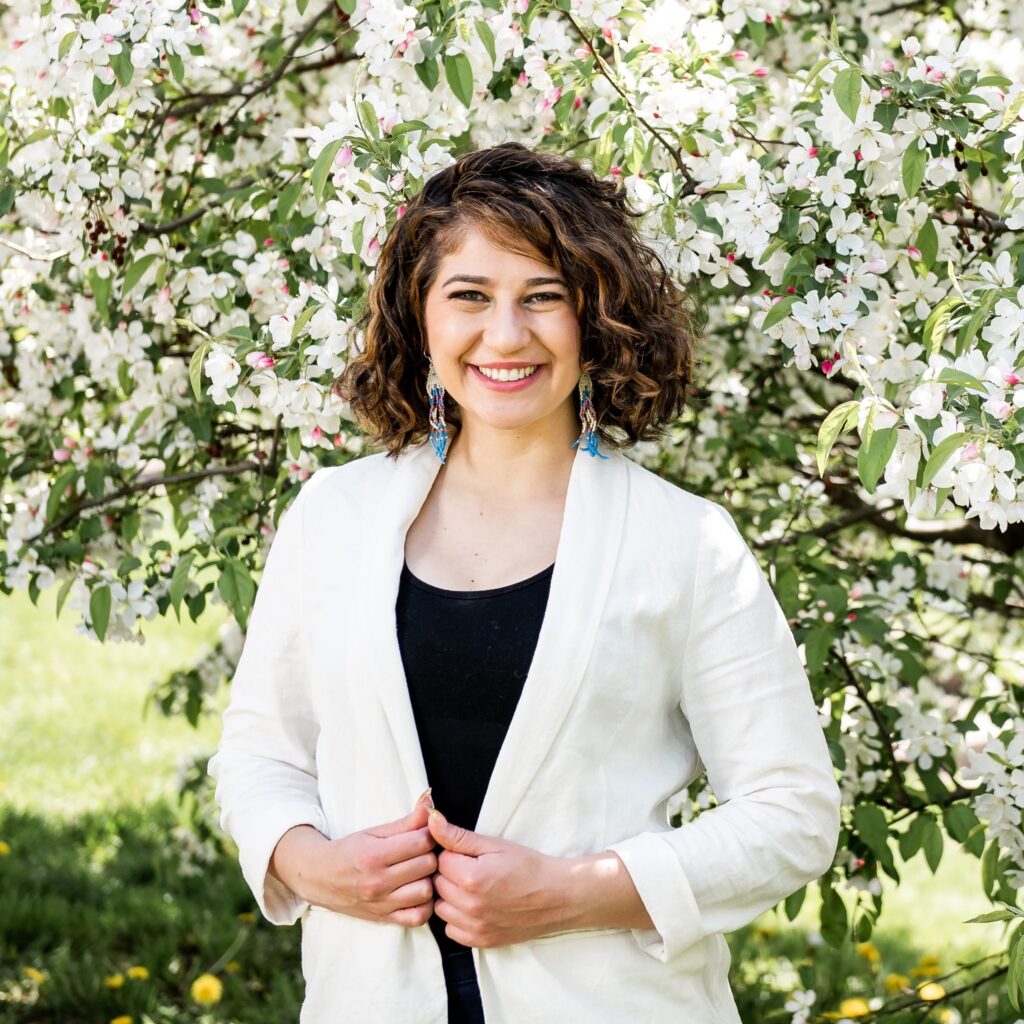Question: Describe a welcoming and thriving urban corridor. What are the ingredients for a healthy and vital streetscape?
Nezhad: One of the core values of my campaign is “we deserve to thrive, not just survive.” To me this is about providing the social support so people can lead dignified, self-determined lives, and it also is a recognition of everyone’s shared right to safe community space, arts, green space, and other cultural resources. In the last year we have seen the people in Minneapolis create public spaces for aid and healing in response to tragedy. Both George Floyd Square and Wince-Marie Square show us a real desire for people-led spaces that provide people a space to not just grieve, but also build solidarity in our communities.
A thriving corridor in our city should include these elements. One major problem in many American cities is a general lack of free activities and space for people. I would love for our urban streets to include resting areas, access to drinking water and public bathrooms. We should fund gardens along street boulevards that can help increase biodiversity, shading, water quality, and carbon sequestration, as well as create green jobs for gardeners. I would also fund more cultural & community events, similar to Our Streets, so that people can dance, eat free meals, exchange homemade goods, and more. Much like our city has parks within 10 minutes of most residential addresses, I think we should look at putting grocery stores, pharmacies, childcare centers, doctor’s offices and more within walking distance of most residents to create walkable communities and more accessible jobs for each neighborhood.
Right now there are lots of ongoing concerns about crime in our major corridors, particularly Downtown & Uptown. I think one of the best things we can do to solve this without continuing the legacy of white supremacist policing and mass incarceration is to provide these services to our communities. Not only will we enrich people’s lives and increase everybody’s feeling of connection to community, these plans also create good jobs that can satisfy people’s economic, social and cultural needs too. I hope that I can work with community groups like Hennepin for People to make these things happen as Mayor.
Question: Climate change is an existential threat. What are the city’s primary tools for addressing climate change, and how would you use them as mayor?
Nezhad: There are several avenues I would like to pursue to create stronger policy around our climate change response. First off, our Energy Partnership deal will be expiring during this next turn, and as Mayor I would work hard to negotiate with our energy providers to get a good deal for the people of Minneapolis by demanding for a greater move towards renewable energy sources like solar and wind. I would also make sure that we help Minneapolis residents, especially low income BIPOC residents and renters, get access to green energy. Ultimately, we need to seek municipal control of our energy systems, something that is currently prohibited by state law. As Mayor I would push the legislature to change that rule for our city, or seek a charter amendment that would allow for this change to go forward.
There are also concerns that have been growing around the existence of heavy industry and its contributions to pollution in low income, BIPOC neighborhoods particularly. I would work with MPCA to create a permit system that demands heavy polluters, such as Smith Foundry and Northern Metals, either find a way to drastically reduce their polluting operations, or leave the city. We could then replace these facilities with unionized, green industry jobs in organic recycling, urban agriculture, and green energy production. Most importantly, I would follow the lead of BIPOC environmental justice organizers who have been leading the path towards these programs, to make sure we are meeting the needs and desires of those communities. One project in particular I do support is the East Phillips Indoor Urban Farm, who have shown how a community can collaborate and create a green economic center. I believe that their work should be supported and funded by the city, and invested in long term as a model for neighborhoods across our city.
Finally, I would like to see our city invest more in jobs for young people, particularly surrounding jobs that focus on “care”, such as health jobs, mental health services, maintenance, and landscaping. These jobs have low output, and if we invest in hiring from our neighborhoods we can create a strong culture of workers in our city directly providing to their communities. One example of such a jobs program would be municipal shoveling, which would not only help keep our streets clean and safe to walk on in winter, but also help reduce our use of salts and protect our water from damage. Another example would be increasing funding for harm reduction services, which not only helps folks seek recovery and healthier living, but also reduces the amount of biohazards in our streets.
Question: Considering that transportation is a leading source of carbon emissions in Minneapolis, do you support reconstructing Hennepin Avenue South with a full-time bus lane and protected bike route (as is called for in adopted city policies, such as the Transportation Action Plan)?
Nezhad: I absolutely support these changes. The more accessible we make our streets to riders of all stripes the safer our communities will be. I support dedicated bike and bus lanes on Hennepin, and would look forward to the results of this and expanding it to other major corridors. Overall I would like to invest more in traffic calming techniques. Creating more protected, dedicated lanes for biking would be also contribute to that. Finally, my municipal shoveling program will make it easier for those who walk and roll to make it to the bus stop, and get in and out of the bus without having to scale treacherous mounds of ice and snow.
